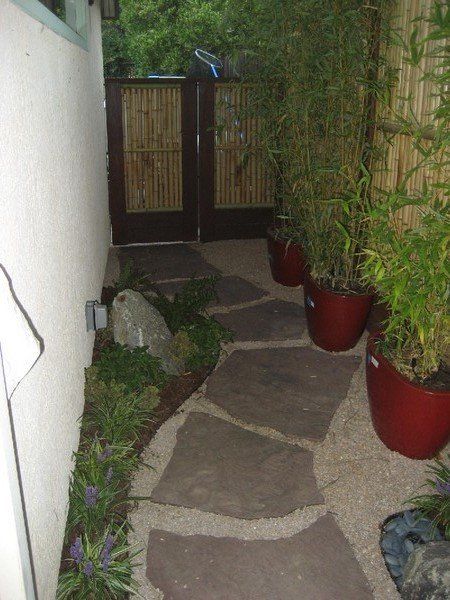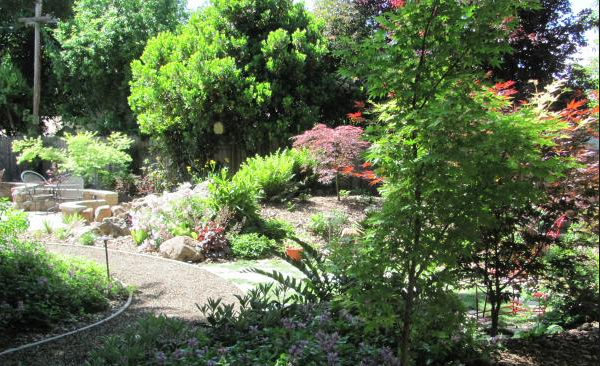Homeowners replace lawn with magical meadow
- By Susan Silva
- •
- 07 Nov, 2009
- •

Susan Silva's grass never looked right, no matter how hard she tried.
Her problem was a common one: Her Orangevale backyard sat in half shade, half sun, dominated by large trees. Then Silva got a puppy – and with him, more complications. Rex, her energetic German shepherd, attacked the lawn as if searching for buried treasure or a stash of old bones.
"I finally decided, 'Enough!' " she recalls of the lawn's last days. "I got so sick of managing it. It was a mess. So I just got rid of it."
In its place, Silva created her own "meadow," a plant-filled space that she and her dog could share without conflict or angst.
Her magical meadow has become a magnet for relaxation, a private place to kick back with friends and enjoy the outdoors.
"This is my sanctuary," Silva says. "It's so tranquil."
Facing water restrictions and time constraints, more urban gardeners are turning to the modern meadow as an alternative to the thirsty lawn.
Compared with turf-grass lawns, these redefined spaces need a fraction of the irrigation, and they actually cut down on yard work. No lawn means no mowing. And the meadows' densely planted ground covers and stones crowd out any weeds.
"It gives you more time to enjoy your backyard instead of working in it," Silva says.
Silva knows yardwork: She's a professional landscape designer. (Her creations can be seen at www.susansilva.com.) In her 29 years in landscaping, she's worked on many yards for clients in the greater Sacramento area.
But tackling her own garden became a true labor of love.
Silva started on her meadow in November 2007, digging up the lawn by hand. A layer of sand became the cushion for 4 tons of flagstone in peach, plum and pink tones. Stone walls formed terraces and seating areas, defining the shady and sunny portions of the garden between liquid amber trees, Japanese maples and a majestic blue spruce.
Into the borders, Silva layered her favorite flowers and herbs: lavender, plumbago, wormwood, rosemary, daylilies, irises, roses and more.
The blend of colors and textures creates a welcoming ambience. Accent fountains babble happily in the shade. A collection of wind chimes adds merry notes to the afternoon breeze under the canopy of trees.
In place of a patchy lawn pocked with holes, "Elfin" creeping thyme fills the space between the flagstones and invites visitors to doff their shoes. Other ground covers wind around the meadow's edges.
"I'm barefoot all the time out here," Silva says. "It's so soft and comfortable – and it smells good, too. These ground covers take foot traffic well and spring back up immediately. The 'steppable' ground covers also do a great job choking out the weeds, and the thyme is great for seasoning."
Bobbi Baldwin, an artist from Fair Oaks, enjoys visiting her friend's garden.
"I think it's wonderful," Baldwin says. "I view it as a painter. It has a real natural feel, but obviously it's orchestrated and planned. It has so many variations of green and so many different textures. It makes you want to touch it. It definitely gives me lots of ideas."
Zach Moore, Silva's gardener who helped create the meadow, likes it, too. "It's great. You need a ground cover that can hold up to traffic. But it looks good year-round, and it definitely minimizes maintenance."
The meadow method works for front yards, too.
Maggie Jimenez ditched her Land Park lawn in favor of colorful, flower-strewn ground covers – and lots of fun.
An accomplished artist, Jimenez incorporated whimsical sculptures throughout her meadow. Tortoises peek between pansies. Rusted garden tools-turned-yard art poke around primroses.
"My front yard has become a wonderland," Jimenez says. "I killed the grass a few years ago and have been adding rocks and art and lovely, low-growing flowering plants. (This summer) it was glorious.
"I am an artist, and I put lots of little weird pieces of art here and there," she adds. "They're stuck in the ground in cement so they can't be stolen."
Like Silva, Jimenez decided to go meadow after years of lawn frustration. "I always wanted a rock garden," she says. "We have a 100-foot, 75-year-old deodar cedar in our front yard. And the lawn always looked bad."
The turning point came when Jimenez and her husband decided to tear out their garage and build an artist studio.
"During the (construction) project, we had a big dumpster sitting on the lawn," she says. "The grass died under it. After we were done, 80 percent of the lawn was dead and I thought, here's my chance."
Jimenez dug up the lawn and started hauling in rocks.
"I didn't know what I was doing," she says. "I got lots of low-growing, crawling, purple and pink plants, and got to work."
With the help of a friend and master gardener, Jimenez laid out two footpaths through the meadow and installed a drip irrigation system. The ground covers flourished, enjoying the mix of sun and shade. Now they pack the space between the rocks, never letting weeds get a toehold.
"I just planted another three flats of pink pansies," Jimenez says. "I go out every day and compliment my meadow. I tell it how beautiful it is. It looks so natural; I really can't believe I have this garden. It's just so amazing to me.
"I ride my bike around Land Park," she adds, "and I've noticed more and more of these front-yard meadows popping up."
Both Silva and Jimenez saw their meadows reach maturity in a relatively short time. Once established, the ground covers virtually take care of themselves.
And Rex the German shepherd? "He leaves the meadow alone," Silva says. "He can't squeeze his paws between the flagstone. If he feels like digging, I created a sandbox for him. He loves it."
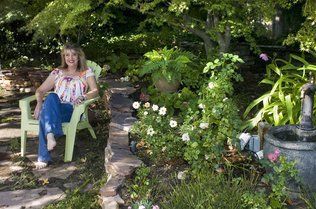

To conform with drought restrictions, we're seriously regulating the water to our lawns or eliminating watering them entirely. Unfortunately, the water most trees desperately need is often missed or forgotten.
It will take thirty years to replace a thirty year old tree. A lawn can be restored in just a couple of months.
Kyle Floyd, with Green Acres Nursery reminds customers that it's the lawn that is the larger culprit for consuming water and not the trees. Unlike lawn, a majority of trees can withstand drought, but still need to be properly watered based on the tree's species and size.
Studies show, a gallon of water per square foot per hour is used with most lawn-watering sprinkler systems. That's 1,000 (one thousand) gallons of water for a 1,000 (one thousand) square foot lawn after being watered a total of just 1 (one) hour. Trees require far less water.
Kyle also reminds customers that a tree's canopy provides moisture, shade, and the need for much less water to the plants that benefit nearby and below it. Trees also cool the house and the need for air conditioning is significantly reduced.
It can be 20 (twenty) degrees cooler under the shade of a mature leafy tree, also providing a very comfortable place out of the sun for relaxing and entertainment.
There are warning signs that trees are stressed and needing water. A healthy tree's vibrancy is replaced with lifeless, under-sized leaves appearing pale and limp. Premature dropping of leaves along with yellowing and browning are other warning signs the tree needs water. The tree's canopy is often sparse instead of full. Prolonged neglect can lead to tree diseases and eventually death to the tree.
It's essential to understand trees and their water needs. Most tree roots are in the top eighteen inches of soil, but studies show the greatest number of tree roots consuming water, oxygen and nutrients are in the top six to eight inches.
It's essential to understand trees and their water needs. Most tree roots are in the top eighteen inches of soil, but studies show the greatest number of tree roots consuming water, oxygen and nutrients are in the top six to eight inches.
The amount of water needed for a tree depends on its size and species. According to the article, "Caring For the Trees in a Dry Climate" from Colorado State University, trees must be given top watering priority during the drought over the lawn and includes these general tree watering guidelines:
- A general rule is to use approximately ten gallons of water per inch of the trunk's diameter (width of trunk measured at knee level) for each watering. General formula: Tree diameter times five minutes equals total watering time.
- Example: When hand watering using a garden hose at medium pressure, it will take about five minutes to produce ten gallons of water. For a four inch diameter tree, it should receive forty gallons of water. Multiply by five minutes for a total watering time of twenty minutes.
- Distribute water evenly under the tree's dripline.
Change your outdoor irrigation systems to drip, micro-spray or low-flow systems based on the needs of your trees and landscape with timers for efficient and not over watering. Seek the help from professional landscapers and nurseries for low water irrigation systems and drought tolerant landscapes for your property.
Water early in the morning or after the sun has gone down. These are the times when trees restore the water lost during the day. Also, be sure to add mulch around the trees to reduce soil temperature and decrease water evaporation.
Soaker hoses and drip systems keep the trees healthy while using less water. They soak into the ground where the water is needed, and not run into the street and drains. Long, slow watering to a depth of twelve inches with soaker hoses or in-line emitter drip systems buried below three to four inches of wood mulch is often recommended. Generally in warmer months, younger trees need to be watered twice a week, and most mature trees every two weeks.
Landscape contractor, Steve Irwin of Alpine Terrace Landscaping often advises using soaker hoses placed around the drip zone (area shaded) of the tree with timers. For extra large established trees like Sequoia sempervirens (Redwoods), Steve advises watering these giant trees with soaker hoses for a twenty-four hour period every two weeks in the warmer months.
An easy and inexpensive option for deep & slow watering for very small trees is to water them using a five gallon bucket. Steve Irwin recommends puncturing a very tiny hole at the the base of the five gallon bucket (thirty-second of an inch), place the bucket under the tree's drip-line, and fill to the brim with water. This method should be done twice weekly per small tree, moving the bucket (s) when empty to other spots within the dripline.
Trees provide shade and shelter to our homes and wildlife, and most importantly trees provide the healthy air all of us need to breathe. It's critically important for our health and environment to keep our trees watered, healthy, and producing oxygen.
According to chemistry expert, Anne Marie Helmenstine, Ph.D in her article, "How Much Oxygen Does One Tree Produce?", are the following quotes from studies made of different trees regarding the overwhelming importance about the oxygen our trees produce.
"One acre of trees annually consumes the amount of carbon dioxide equivalent to that produced by driving an average car for twenty-six thousand miles. The same acre of trees also produces enough oxygen for eighteen people to breathe for a year." - NY Times
"A mature leafy tree produces as much oxygen in a season as ten people inhale in a year." - Arbor Day Foundation
"On average, one tree produces nearly two hundred sixty pounds of oxygen each year. Two mature trees can provide enough oxygen for a family of four." - Environment Canada
"A one hundred foot tree, eighteen inches in diameter at its base, produces six thousand pounds of oxygen."
- Northwest Territories Forest Management
"A single mature tree can absorb carbon dioxide at a rate of forty eight pounds a year and release enough oxygen back into the atmosphere to support two human beings."
- Mike McAliney, Arguments for Land Conservation: Documentation and Information Sources for Land Resources Protection, Trust for Public Land, Sacramento, Ca. December 1993
Susan Silva Landscape Design of Orangevale, has been designing conceptual residential landscape plans for more than thirty years.
Susan recommends Steve Irwin and his crew with Alpine Terrace Landscaping for professionally engineering and installing her landscape designs.
Susan refers to Kyle Floyd and other team members at Green Acres Nursery, recommending them to her clients for quality service, plants & supplies.
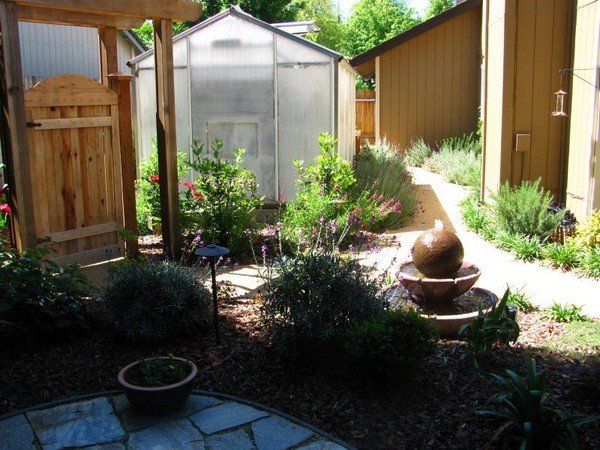
Whether you want to garden all year long or just prolong the spring and summer seasons, there’s a greenhouse just right for you and the space that you have. Regardless of the size of your backyard, a greenhouse comes in many sizes and designs imaginable, from something simple to something elaborate.
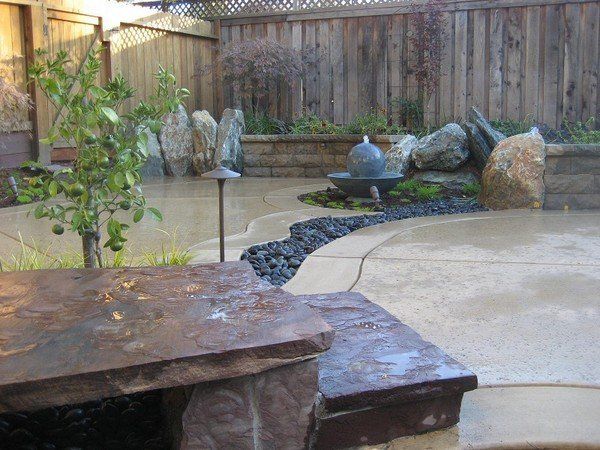
Going into the job, I knew this small backyard was in need of a complete makeover. The deck was old, worn and rotting. The brick patio and planters were falling apart. The spa always needed maintenance and wasn't being used. The backyard also needed screening from fences, high rise wires and the westerly sun.
